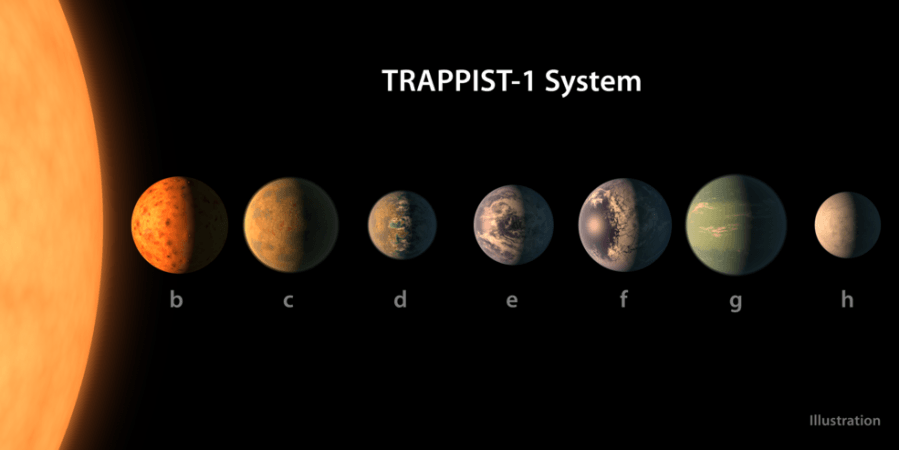
NASA's Kepler telescope has found and confirmed some crucial details regarding the orbital pattern of the recently discovered exoplanets in the TRAPPIST-1 system.
Also Read: Saturn's moon Titan underwent Mars-like evolution
The latest insights reveal details about TRAPPIST-1h -- the least understood planet of TRAPPIST-1 -- which is the outermost planet in the system.
The findings have been revealed by researchers from University of Washington, who used data accumulated by NASA's Spitzer Space Telescope, the TRAPPIST (Transiting Planets and Planetesimals Small Telescope) in Chile and other ground-based telescopes.
The team recognised a mathematical pattern in the frequency at which each of the six innermost planets orbits their star. This complex but predictable pattern, called an orbital resonance, occurs when planets exert a regular, periodic gravitational tug on each other as they orbit their star.
The exoplanet TRAPPIST-1h is found to orbit the TRAPPIST-1 star over a span of 19 days. The research has revealed that TRAPPIST-1h lies in an inhabitable zone as it is way too cold to support life forms.
"It's incredibly exciting that we're learning more about this planetary system elsewhere, especially about planet h, which we barely had information on until now," said Thomas Zurbuchen, associate administrator of NASA's Science Mission Directorate.
An international team of researchers had analysed the raw data provided by Kepler space observatory after it was released in March and they published their findings based on the uncelebrated data in the Nature Astronomy journal on Monday.
"This finding is a great example of how the scientific community is unleashing the power of complementary data from our different missions to make such fascinating discoveries," Zurbuchen said.
"It really pleased me that TRAPPIST-1h was exactly where our team predicted it to be. It had me worried for a while that we were seeing what we wanted to see -- after all, things are almost never exactly what you expect them to be in this field," added Rodrigo Luger, doctoral student at UW in Seattle, and lead author of the study published in the journal Nature Astronomy.
"Nature usually surprises us at every turn, but, in this case, theory and observation matched perfectly," Luger added.
How the future @NASAWebb will study 7 Earth-size planets’ atmospheres for ozone & other signs of life #TRAPPIST1 https://t.co/8JtjzClTga pic.twitter.com/HbZYXUkovS
— NASA Planetquest (@PlanetQuest) March 2, 2017
NASA had first announced about the discovery of this planetary system in a press conference in February. Located at around 40 light-years away in the constellation of Aquarius, the TRAPPIST-1 system is estimated to be between 3 billion and 8 billion years old. The TRAPPIST-1 star is an ultra cool dwarf star, which is comparatively more giant and massive than Jupiter.
The TRAPPIST-1 star is found to be orbited by seven temperate terrestrial planets -- the largest number of planets spotted by astronomers which orbits a star in another planetary system.
NASA aims at studying the seven worlds using James Webb Space Telescope, which is scheduled to be launched in October 2018. This telescope would help the astronomers in finding if the exoplanets present in the TRAPPIST-1 planetary system are habitable or not.
A Resonant Dance of the Seven TRAPPIST-1 Planets:

















